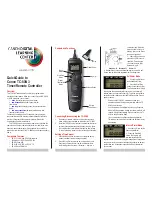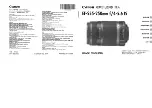
Figure 1
A
B
PSD
IR LED
Some Observations on the Effect of Different Kinds of Light
Ambient Light:
Tests have shown Sharp sensors to be highly immune to ambient light levels.
Incandescent, fluorescent, and natural light don’t appear to bother it. The
only instance where we were able to get it to falsely measure was when a
flashlight was pointed directly into the sensor’s receiver; even a few degrees
off-centre is enough for the sensor to ignore it.
IR Light:
The GP2Y uses a modulated IR beam to guard against false triggering from
the IR component of incandescent, fluorescent, and natural light. Tests with
several kinds of IR remote controls have shown that even with 2 or 3 remotes
pointed at the GP2Y, the unit still functions normally.
Laser Light:
Tests with a laser pointer had results similar to the flashlight; only a beam
aimed straight into the sensor’s receiver would cause a false reading. If the
beam comes from even a few degrees off-center, it has no effect.
How Does it Work ?
Figure 1 shows how the GP2Y uses an array of photodiodes (called a Position
Sensitive Detector, or PSD) and some simple optics to detect distance. An
infra-red diode emits a modulated beam; the beam hits an object and a
portion of the light is reflected back through the receiver optics and strikes the
PSD. Object A is closer and therefore the reflected light from it enters the
receiver’s lens at a greater angle than does light from object B.
www.solarbotics.com
5
AIRRS+ Manual v1.7


























